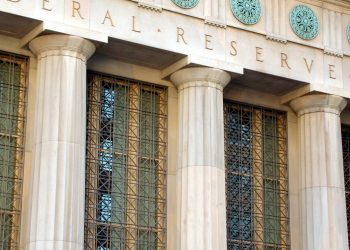Multifamily transaction activity slowed sharply in the second half of 2022, while investor demand continued to gravitate toward the Sun Belt, according to a new report from Yardi Matrix.
Yardi Matrix’s latest report found that the 2022 trends are now continuing into 2023. Deal flow is stalled by pricing uncertainty and multifamily investors are increasingly focused on markets with growth in jobs and population. Whether and how much deal flow picks up in 2023 will depend to a large degree on stability in the capital markets.
Key highlights:
- Multifamily sales totaled $187 billion in 2022, down 16.1% from $222.9 billion in 2021. Despite the decrease, 2022’s transaction volume was the second-highest annual total ever.
- Sales activity became more difficult as 2022 unfolded and the Federal Reserve pushed short-term interest rates up by 400 basis points, including an unprecedented four straight months of 75-basis-point increases.
- The impact on transactions was apparent in quarterly activity. First-half volume totaled $111.7 billion—$50.9 billion in Q1 and $60.8 billion in Q2—and then volume decelerated to $46.6 billion in Q3 and $28.7 billion in Q4.
- Investor demand was so strong that the market was on pace for another record year before the capital markets disruption. First-half 2022 volume was 60.4% above the first half of the 2021 record year. But volume in the second half of 2022 was 51.8% below the same period in 2021, with Q4 2022 volume 70% below Q4 2021.
- The flow of capital continues to trend toward the Sun Belt, which captured the top six metros for sales volume in 2022. Atlanta led metros in multifamily transaction volume with $11.4 billion, followed by Phoenix ($10.5 billion), Dallas ($10.1 billion), Houston ($9.7 billion), Miami ($6.6 billion) and Orlando ($6.2 billion).
- Each metro is in a state that has recorded above-trend population growth in recent years, a trend exacerbated by the growth of post-pandemic work-from-home practices.
- Secondary and tertiary markets accounted for $153 billion of apartment sales, compared to $34 billion in gateway markets (New York, Boston, Washington, D.C., Miami, Chicago, Los Angeles and San Francisco). On a year-over-year basis, gateway market sales declined only 7.6%, compared to -18.4% for secondary and -16.1% for tertiary markets.
- On a regional level, sales were highest in the Southeast at $71.2 billion, followed by the Southwest ($41.1 billion), West ($35.7 billion), Northeast ($22.5 billion) and Midwest ($16.5 billion). However, the Northeast (18.0%) and Midwest (10.6%) saw activity rise compared to 2021, while sales were down YoY by at least 20% in the Southeast, Southwest and West.
- Multifamily investors are increasingly favoring markets that not only provide population and job growth but also have less political risk. Large coastal states have more areas subject to rent controls and are more likely to pass new laws that impact investors’ bottom lines.
Major takeaway:
Paul Fiorilla, Director of Research for Yardi Matrix, commented:
“Indeed, the biggest question the market faces is not whether we will see more distressed assets but by how much distress will increase. Banks have become conservative with the prospect of a widely projected economic downturn, so borrowers are facing both rising rates and less leverage.
“Scenarios that will lead to distress in 2023 include properties that were financed at historically low rates in recent years coming up for maturity at higher prevailing rates; properties whose interest rate cap has expired and are now facing a large jump in debt-service payments; and properties that have a downturn in performance.
“Distress may be limited by the strong income growth of recent years and ongoing steady demand for apartments. Even so, value-add investors have raised tens of billions of dollars to take advantage of potential recapitalizations. Indeed, despite the sector’s issues, many investors view multifamily as a safer place to park capital than other investment products or other commercial property classes such as office or retail.
“Strong investor demand will provide some buffer for multifamily until market volatility declines. Surveys show market players expect capital conditions to improve in the second half of 2023, which would unleash more sales activity, but that is by no means certain. The 10-year Treasury rate has recently come down to 3.6% from its peak of 4.25% last fall, as bond investors expect the economy to weaken and the Fed to reverse its aggressive inflation stance. While lower rates would boost transactions by reducing mortgage costs, if rates decline because of an economic downturn, demand would likely weaken.
“As most economic scenarios contain mixed blessings for deal flow, volatility may be the most critical factor for transaction activity. Transaction activity will pick up when market conditions return to some semblance of stability and market players believe they can underwrite with a higher level of certainty than exists today.”
For the full report, click here.












